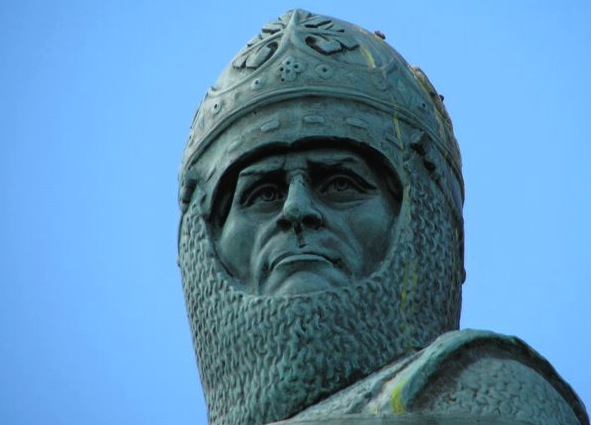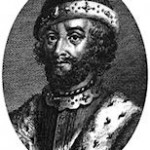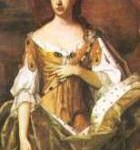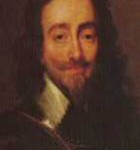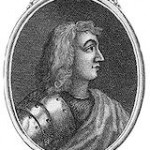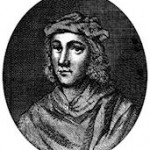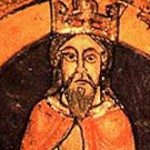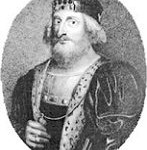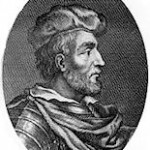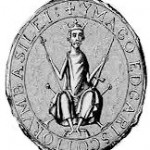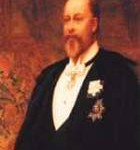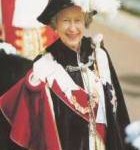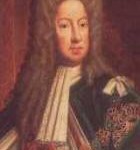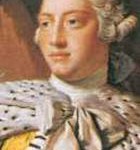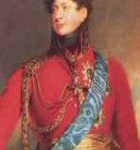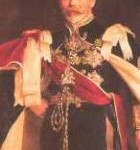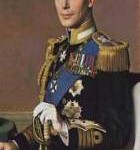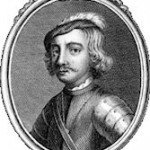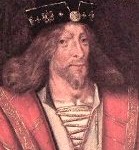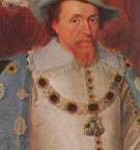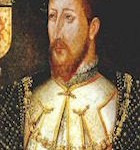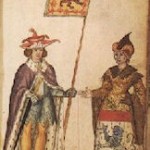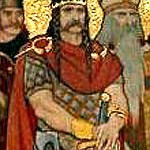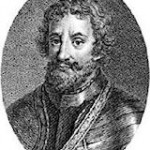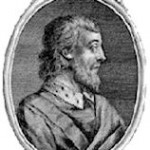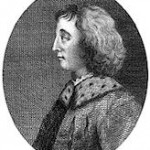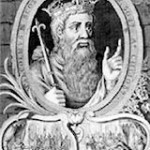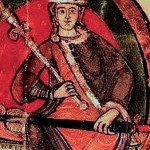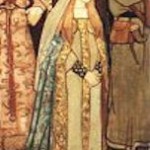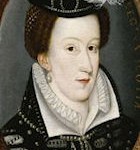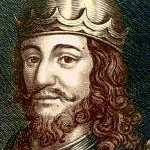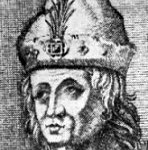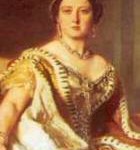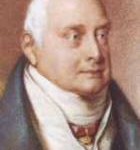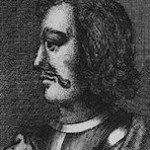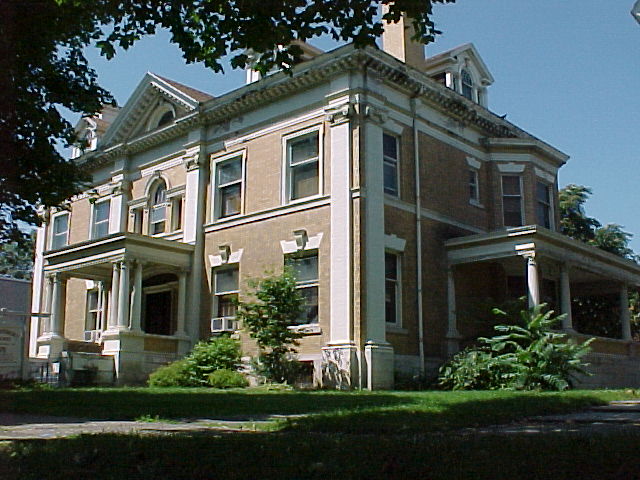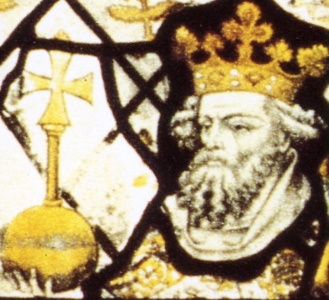- Alexander I ( 1107 – 1124 )
- Alexander II ( 1214 – 1249 )
- Alexander III ( 1249 – 1286 )
- Constantine II ( 900 – 943 )
- David I ( 1124 – 1153 )
- David II ( 1329 – 1371 )
- Donald II ( 889 – 900 )
- Donald III ( 1093 – 1094 )
- Duncan I ( 1034 – 1040 )
- Duncan II ( 1094 )
- Edgar ( 1097 – 1107 )
- Indulf ( 954 – 962 )
- James I ( 1406 – 1437 )
- James II ( 1437 – 1460 )
- James III ( 1460 – 1488 )
- John Balliol ( 1292 – 1296 )
- Kenneth MacAlpin ( 834 – 859 )
- Macbeth ( 1040 – 1057 )
- Malcolm I ( 943 – 954 )
- Malcolm III ( 954 – 1034 )
- Malcolm III ( 1058 – 1093 )
- Malcolm IV ( 1153 – 1165 )
- Margaret, Maid of Norway ( 1286 – 1290 )
- Robert the Bruce ( 1306 – 1329 )
- Robert II ( 1371 – 1390 )
- Robert III ( 1390 – 1406 )
- Wlliam I, The Lion ( 1165 – 1214 )
Alpín MacEchdach ( 825 – 834 )
- 831 – Diarmait of Iona goes to Ireland with relics of St Columba
- 834 – Alpín MacEchdach killed in Galloway. His son Kenneth succeeds him.
Kenneth MacAlpin ( 834 – 859 )
- 834 – Kenneth succeeds his father Alpin MacEchdach
- 839 – Eóganan mac Óengusa and his brother Bran killed in battle with Vikings end of dominance of Fortriu.
- 844 – Kenneth MacAlpin becomes the dominant king of the lands of Dál Riata and of the Picts which would become known as Scotia,
- 849 – Kenneth MacAlpin moves St Columba’s relics to Dunkeld making it an important Christian Centre
- 858 – Death of Kenneth MacAlpin
Constantine I ( 863 – 877 )
- 870 – Alt Clut, Dumbarton Rock, captured by the Norse-Gael or Viking leaders Amlaíb Conung and Ímar after six month’s of siege
Aedh ( 877 – 878 )
- 878 – Kenneth MacAlpin’s son Áedh killed; Eochaid becomes king.
Eochaid ( 879 – 889 )
- 889 – Death of Eochaid; Donald II grandson of Kenneth becomes king.
Donald II ( 889 – 900 )
- c.890 – Exodus of the Strathclyde Britons to Gwynedd (in Wales).
Constantine II ( 900 – 943 )
- 900 – Constantine II succeeds Donald II
- 904 – Constantine’s forces defeat Vikings at the Battle of Strathearn
- 937 – Battle of Brunanburh: Alliance of Scots, Celts, Danes, and Vikings, defeated by Aethelstan of England who takes the title of King of all Britain
- 943 – King Edmund of England extends his rule into southern Scotland,
- 943 – Abdication of Constantine II
Malcolm I ( 943 – 954 )
- 943 – Malcolm I becomes king
- 954 – Malcolm I killed by men of Moray
Indulf ( 954 – 962 )
- 954 – Indulf captures Edinburgh from Northumbria.
Malcolm III ( 954 – 1034 )
- 1018 – Malcolm II defeats a force of English and Vikings at Carham, and extends Scottish rule into Lothian and Northumbria.
Duncan I ( 1034 – 1040 )
- 1034 – Duncan I succeeds to the Scottish throne
- 1040 – Duncan is killed in a civil war. His cousin, Macbeth, succeeds
Macbeth ( 1040 – 1057 )
- 1040 – Macbeth becomes king
- 1050 – Macbeth goes on a pilgrimage to Rome
- 1054 – Macbeth’s forces defeated at Dunsinane by a combined army of English, Norse and lowland Scots under Siward Earl of Northumberland
- 1057 – Macbeth is slain at the Battle of Lumphanan by Malcolm, son of Duncan I
Lulach ( 1057 – 1058 )
- 1057 – Lulach, Macbeth’s stepson, ascended the throne and was crowned at Scone
- 1058 – King Lulach killed by Malcolm III at Essie, Strathbogie
Malcolm III ( 1058 – 1093 )
- 1058 – Malcolm III (Canmore) crowned
- 1069 – Malcolms married his 2nd wife Margaret of Wessex daughter Edgar the Aetheling who had been deposed by William I the Conqueror
- 1070 – Malcolm attacks Northumbria and Cumbria intent on expanding his kingdom into northern England.
- 1091 – The Norman forces of King William II of England advance North and capture Carlisle and Cumbria
- 1092 – At Abernethy Malcolm is forced to submit to the Normans who take his son Duncan and brother-in-law Edgar Aetheling as hostages
- 1093 – Malcolm invades England but is killed at the Battle of Alnwick. He is succeeded by his brother Donald II (Donald Blane)
Donald III ( 1093 – 1094 )
- 1093 – Donald III (Donald Bane) become king
- 1094 – Donald Bane is driven out by Duncan, Malcolm’s III’s son, who becomes Duncan II. He is killed a few months later at the Battle of Monthechin, Kincardine, and Donald Bane returns
Duncan II ( 1094 )
- 1094 – Duncan II becomes king. He is killed a few months later at the Battle of Monthechin, Kincardine, and Donald Bane returns
Donald III ( 1093 – 1094 )
- 1094 – Donald III regains the throne and jointly rules with Edmund.
- 1097 – Donald is overthrown, blinded and imprisoned by Edgar. Edmund flees to Montecute Abbey in Somerset.
Edgar ( 1097 – 1107 )
- 1097 – Edgar deposes his uncle Donald and brother Edmund and becomes king
- 1098 – Edgar cedes the Western Isles to Magnus Barefoot
- 1100 – Edith known as Matilda, daughter of Malcolm III of Scotland, marries King Henry I of England.
- 1107 – Edgar dies and is succeeded by his younger brother, Alexander I
Alexander I ( 1107 – 1124 )
- 1107 – Alexander I become king
- 1114 – Alexander aids Henry I in his Welsh campaigns
- 1124 – Alexander dies and is succeeded by David I
David I ( 1124 – 1153 )
- 1124 – David I becomes king and introduces the feudal system of landholding to much of Scotland.
- 1138 – David I of Scotland invades England in support of his niece, Matilda wife of King Stephen of England, but is defeated at the Battle of the Standard in Yorkshire.
- 1139 – Treaty of Durham in which David I is recognised as King of an independent Scotland by King Stephen of England.
- 1153 – David I dies and is succeeded by his grandson Malcolm IV
Malcolm IV ( 1153 – 1165 )
- 1153 – Malcolm IV becomes king
- 1156 – Somerled defeats the Norse King of Mann and the Isles establishing his own semi-independent rule as Innse Gall – King of the Hebrides.
- 1157 – Henry II of England takes back lands in Northern England granted to David I. The border is fixed at the Solway and Tweed very close to where it is today.
- 1164 – Somerled is defeated by the Scottish crown in the Battle of Renfrew.
- 1165 – Malcolm IV dies at Jedburgh Castle and is succeeded by his brother, William the Lion
Wlliam I, The Lion ( 1165 – 1214 )
- 1165 – William the Lion become king
- 1173 – William the Lion invades England but is captured by Henry II at Alnwick and forced to surrender Scottish independence
- 1174 – William I signs the Treaty of Falaise in which he swears allegiance to Henry II of England.
- 1185 – William pays Richard I of England money to finance his crusades to the Holy Land.
- 1189 – Scotland is recognized as independent by Richard I of England
- 1192 – The Pope decress that the Scottish Church is answerable directly to him and not through the English Archbishop of York.
Alexander II ( 1214 – 1249 )
- 1214 – Accession of Alexander II, son of William the Lion
- 1216 – Alexander joins the barons of England against King John. A Scottish army marches to Dover and joins Prince Louis of France who captures the Tower of London before being driven back in 1217
- 1217 – Peace treaty with England guarantees peace for almost 20 years
- 1221 – Alexander marries Joan daughter of King John of England
- 1233 – Building of Glasgow cathedral starts
- 1234 – Galloway’s independent existence ends with the death of Alan Lord of Galloway.
- 1235 – First Scottish Parliament known as the Three Estates meets at Kirkliston
- 1237 – Southern border of Scotland established in the Treaty of York.
- 1249 – Alexander launches an expedition to gain the Western Isles but dies on Isle of Kerrara, Oban Bay, before the expedition sets sail. He is succeeded by his son, Alexander III
Alexander III ( 1249 – 1286 )
- 1249 – Alexander III becomes king and is crowned on the Stone of Destiny
- 1263 – Alexander III defeats Viking army at the Battle of Largs
- 1263 – King Haakon of Norway (which at that time included Orkney, Shetland and the Western Isles) dies on Orkney
- 1266 – Norway cedes the Western Isles to Scotland in the Treaty of Perth.
- 1282 – Devorgilla, Countess of Galloway, mother of John Balliol, founds Balliol College, Oxford.
- 1286 – Alexander dies in riding accident leaving the throne to his four-year-old granddaughter, Margaret
Margaret, Maid of Norway ( 1286 – 1290 )
- 1286 – Margaret, Maid of Norway, inherits the throne from her grandfather Alexander
- 1290 – Margaret dies in the Orkneys en route from Norway to Scotland. Edward I of England is asked to select a successor
John Balliol ( 1292 – 1296 )
- 1291 – Claimants to the Scottish throne met King Edward I of England at Norham on Tweed to resolve succession
- 1292 – Edward I of England grants the Scottish throne to John Balliol.
- 1295 – Treaty between King John Balliol of Scotland and King Philippe IV of France which promised mutual help against the English – the start of the “Auld Alliance”.
- 1296 – Edward invades Scotland, defeats the Scots at Dunbar and deposes Balliol. He then takes over the throne of Scotland and removes the Stone of Scone to Westminster.
Robert the Bruce ( 1306 – 1329 )
- 1296 – – 1306 Interregnum period with no Scottish monarch and rule by Edward I of England.
- 1297 – Andrew de Moray and William Wallace lead the Scots to victory over England at Stirling Bridge.
- 1298 – Edward invades Scotland again and defeats William Wallace at the Battle of Falkirk
- 1303 – France and England make peace, releasing forces to attack Scotland
- 1304 – Stirling Castle, the last of the Scottish castles to be captured by Edward I
- 1305 – Wallace is captured and taken to London, where he is tried for treason, and hanged, drawn, and quartered
- 1306 – Robert Bruce is crowned king at Scone but is driven into hiding by the English occupation army of Edward I
- 1307 – Edward I sets out to invade Scotland but dies on his way north. Bruce begins campaign to drive the English out of Scotland
- 1307 – English forces defeated by Bruce at Loudon Hill
- 1309 – King Robert the Bruce convenes his first parliament, at St Andrew
- 1311 – The Scots plunder the North of England
- 1314 – Bruce besieges Stirling Castle. An English army sent to break the siege is routed at the Battle of Bannockburn
- 1318 – Robert the Bruce captures Berwick on Tweed.
- 1320 – Nobles assert Scottish independence in the Declaration of Arbroath.
- 1323 – Truce between Bruce and Edward II fails to stop warfare between the two countries
- 1328 – Treaty of Edinburgh between King Robert I and Edward III which recognised Scotland’s independence, ending the 30 years of Wars of Independence.
- 1329 – Robert the Bruce dies at Cardross Castle possibly of leprosy.
David II ( 1329 – 1371 )
- 1329 – David II succeeds to the Scottish throne on the death of his father, Robert Bruce
- 1331 – David II (aged 7) crowned at Scone
- 1332 – Edward Balliol, son of John Balliol, invades Scotland and deposes David II. Edward Balliol is crowned King of Scotland by the English
- 1333 – David is restored to the throne.
- 1333 – Balliol flees to England but returns when Edward III of England invades Scotland and defeats the Scots at Halidon Hill. King David II goes into exile in France.
- 1341 – Edinburgh Castle captured from the English. David returns from exile.
- 1346 – David II invades England but is defeated at Neville’s Cross and captured. He is taken to the Tower of London, where he is imprisoned for the next 11 years
- 1350 – Scotland suffers from the Black Death. Up to a quarter of the population die.
- 1356 – Edward III devastates the Lothian region in a campaign known as ‘The Burnt Candlemas’
- 1357 – David II is released from captivity and returns home to Scotland.
- 1371 – Death of David II. He is succeeded by his nephew, Robert Stewart, the first Stewart King of Scotland. Robert, the hereditary High Steward of Scotland and grandson of Robert Bruce, is crowned
Robert II ( 1371 – 1390 )
- 1371 – Robert Stewart, the first Stewart King of Scotland becomes king
- 1384 – Truce is arranged between England, Scotland, and France. Scotland refuses to recognize truce. Anglo Scottish war resumes
- 1388 – Battle of Otterburn in which Scots defeat Henry Percy (Harry Hotspur)
- 1390 – Robert II dies and is succeeded by his son John, who becomes Robert III.
Robert III ( 1390 – 1406 )
- 1390 – Robert III becomes king. He delegates power to his younger brother, the Earl of Fife, later the Duke of Albany
- 1402 – English defeat Scots in the Battle of Nesbit Moor and the Battle of Humbleton Hill.
- 1406 – Robert II is disabled in a riding accident and his eldest son is killed by the Duke of Albany. Robert sends his second son to James to France but he is captured by English near Flamborough Head. James is taken to London, where Henry IV of England confines
- 1406 – King Robert III dies and James I ascended the throne but was not crowned until 1424 as he was a prisoner of the English.
James I ( 1406 – 1437 )
- 1406 – James I succeeds to the throne but remains imprisoned in England
- 1413 – Foundation of the University of St Andrews.
- 1423 – Treaty of London, releasing James I from his years captivity in England
- 1437 – Assassination of James I. He is succeeded by his son, James II
James II ( 1437 – 1460 )
- 1437 – James II becomes king aged 6 years
- 1440 – Regents Douglas and Livingston struggle for power culminating in the ‘Blach Dinner’ at Edinburgh Castle during which William 6th Earl of Douglas was dragged out and executed.
- 1449 – James marries Mary of Gueldres, niece of the Duke of Burgundy
- 1451 – Establishment of the University of Glasgow.
- 1457 – James II decrees that football and golf are banned to encourage archery practice
- 1460 – King James II killed by an exploding cannon at the siege of Roxburgh Castle
James III ( 1460 – 1488 )
- 1460 – James III becomes king at 8 years old
- 1472 – Denmark cedes Orkney and Shetland to Scotland.
- 1482 – Berwick on Tweed finally ceded to King Edward IV of England after changing hands 12 times
- 1488 – Battle of Sauchieburn, and the assassination of James III. He is succeeded by his son, James IV
James IV ( 1488 – 1513 )
- 1488 – James IV becomes king
- 1493 – Lordship of the Isles abolished. In 1540 the title was reserved to the crown.
- 1495 – Creation of the University of Aberdeen (King’s College).
- 1496 – Education Act of 1496 makes education compulsory for barons and wealthy landowners.
- 1497 – Chair of Medicine established at Aberdeen University.
- 1502 – Marriage contract between James IV and Margaret Tudor signed by King James
- 1503 – King James IV marries Margaret Tudor, daughter of King Henry VII of England. The marriage was known as the Union of the Thistle and the Rose.
- 1507 – First printing press in Scotland is set up by Andrew Myllar
- 1513 – James IV invades England to support his French allies after the English king, Henry VIII, invades France. James and most of the Scottish nobility and clergy are slaughtered by the English army at the Battle of Flodden Field
James V ( 1513 – 1542 )
- 1513 – The infant James V becomes king
- 1528 – Patrick Hamilton Protestant reformer is burned at the stake for heresy
- 1532 – Creation of the College of Justice and the Court of Session.
- 1542 – James invades England but is defeated at the Battle of Solway Moss and dies a few weeks later. His daughter, the one-week-old Mary, succeeds
Mary Queen of Scots ( 1542 – 1567 )
- 1542 – One-week-old Mary, succeeds to the throne on the death of her father James V
- 1543 – At the Treaty of Greenwich Mary is betrothed to Prince Edward son of Henry VIII of England, but the Scottish Lords refuse to ratify the treaty preferring an alliance with France,
- 1558 – Mary, Queen of Scots, marries French Dauphin, Francis Valois (he was aged 14) at Notre Dame in Paris. She adopts the French spelling of Stuart for her surname
- 1559 – John Knox returns to Scotland from Geneva to promote Calvinism.
- 1559 – Mary becomes Queen of France when her husband becomes King
- 1560 – Parliament legislates protestant reformation of the Church of Scotland.
- 1560 – Treaty of Edinburgh between France and England, recognising sovereignty of Mary Queen of Scots and her first husband Francis II
- 1560 – Latin Mass prohibited in Scotland by Parliament as Protestant faith gains the ascendancy
- 1561 – Mary Queen of Scots lands at Leith on her return from France, after the death of her husband, King Francis II
- 1565 – Mary marries her cousin Henry Stuart, Lord Darnley. The marriage is a disaster
- 1566 – Darnley jealous of Mary’s Italian secretary David Rizzio, bursts into her room at Holyrood and Rizzio is murdered.
- 1566 – Mary Queen of Scots gives birth to the future King James VI of Scotland and I of England
- 1567 – Lord Darnley, husband of Mary Queen of Scots, assassinated
- 1567 – Mary marries Earl of Bothwell. The Scottish Lords imprison Mary in Loch Leven castle.
- 1567 – Mary Queen of Scots abdicates and the young James VI accedes to Scottish throne. The Earl of Mar appointed regent.
James VI (James I of England) ( 1567 – 1625 )
- 1567 – King James VI (aged 13 months) is crowned at the Church of the Holy Rude, beside Stirling Castle
- 1568 – Mary Queen of Scots flees to England following the defeat of her army at the Battle of Langside near Glasgow.
- 1578 – James VI takes over government from his regent James Douglas.
- 1582 – Establishment of the University of Edinburgh by Royal Charter.
- 1587 – Mary is beheaded by the order of Queen Elizabeth I of England.
- 1592 – Presbyterianism becomes the established form of church government in Scotland by Act of Parliament.
- 1600 – The Gregorian Calendar is adopted in Scotland. The year begins on 1st January instead of 25th March
- 1603 – The Union of the Crowns James VI of Scotland becomes James I of England.
- 1614 – John Napier invents logarithms and publishes a book promoting their use in mathematics.
- 1618 – James VI forces episcopacy on the Church of Scotland through the Five Articles of Perth.
- 1625 – James VI dies. His son Charles I becomes king of England and Scotland
- King Charles I ( 1625 – 1649 )
- 1633 – Education Act of 1633 ordains a school in every parish (partially successful).
- 1637 – William Laud, Archbishop of Canterbury, order the Scottish Kirk to use the new Anglican prayer book.
- 1638 – Scottish Covenanters rebel against Charles I.
- 1643 – The Solemn League and Covenant promises Scots army to aid English parliamentarians against the king.
- 1649 – Charles I is executed. There follows 11 years of rule by Parliament as the Commonwealth under Cromwell.
King Charles II ( 1660 – 1685 )
- 1651 – Scotland incorporated into the English Commonwealth and Protectorate.
- 1660 – The monarchy is restored and Scotland resumes its status as a separate kingdom.
- 1672 – The High Court of Judiciary is established as the high criminal court of Scotland
- 1679 – Archbishop Sharp a symbol of royal rule over the Kirk is killed by Covenanters who attempt an uprising. Duke of Monmouth defeats Covenanters at the Battle of Bothwell Brig.
King James II ( 1685 – 1688 )
- 1685 – James succeeds his brother, Charles II.
- 1688 – William of Orange lands at Torbay and advances on London.
- 1688 – James abdicates and flees to exile in France. William becomes King William III with his wife Mary.
King William III and Queen Mary II ( 1689 – 1702 )
- 1689 – Jacobite Highlanders rise in support of James and are victorious at Killiekrankie but are defeated a few months later at Dunkeld.
- 1689 – The Claim of Right and the re-establishment of Presbyterianism.
- 1691 – King William offers Highlanders a pardon for the Jacobite uprising if they sign allegiance him
- 1692 – Glencoe Massacre. MacDonalds are killed by Campbells allegedly for not signing the oath of allegiance to the crown.
- 1695 – The Bank of Scotland is created by Act of Parliament.
- 1696 – Education Act of 1696 ordains a school in every Scottish parish
- 1700 – Attempt to establish a new Caledonian colony ‘The Darien Scheme’ in Panama is a disaster and nearly bankrupts Scotland,
- 1701 – Act of Settlement bars Catholics from the throne. The aim is to prevent the exiled James Edward Stuart ‘The Old Pretender’ from return.
Queen Anne ( 1702 – 1714 )
- 1702 – Anne succeeds her brother-in-law, William III.
- 1707 – The Act of Union is passed by the English and Scottish parliaments and unites the kingdoms transferring the seat of Scottish government to London
- 1708 – James Edward Stuart, ‘The Old Pretender’, sails to Scotland in an unsuccessful attempt to gain the throne.
- 1709 – The Scottish Society for the Promotion of Christian Knowledge is founded with the aim to eradicate ‘Popery’ and the Gaelic language in the Highlands
- 1714 – Queen Ann the last Stuart monarch dies.
King George I ( 1714 – 1727 )
- 1714 – George I, the first Hanoverian King, succeeds his distant cousin, Anne.
- 1715 – The Jacobite rising begins in Scotland intending to place the ‘Old Pretender” James Edward Stuart, heir to James II on the throne. The rebellion is defeated after a few weeks.
- 1719 – A small Spanish pro Jacobite force land but are defeated at Glenshiel
- 1722 – Rob Roy MacGregor the outlaw surrenders to the Duke of Montrose
- 1723 – Adam Smith, author of ‘The Wealth of Nations’ born in Kirkcaldy
King George II ( 1727 – 1760 )
- 1727 – George II succeeds his father, George I.
- 1727 – Janet Horne is the last person in Scotland to be condemned and burnt for witchcraft
- 1736 – Captain of the Edinburgh town guard ‘Black Jock’ Porteus is lynched by a mob objecting to his harsh treatment of smugglers.
- 1739 – David Hulme publishes his ‘Treatise of Human Nature’ and founds the ‘Scottish Enlightenment’ movement
- 1740 – The Black Watch regiment is founded for policing the Highlands
- 1744 – The Honourable Company of Edinburgh Golfers founded – the world’s first golf club.
- 1745 – Charles Edward Stuart, raises his standard at Glenfinnan, at the start of the ’45 Jacobite uprising
- 1745 – Charles Edward Stuart victorious at Battle of Prestonpans. His forces march South and reach Derby before retreating back to Scotland
- 1746 – Scots defeated at the Battle of Culloden. Duke of Cumberland, the King’s 2nd son, ruthlessly represses the rebels and Scottish traditions.
- 1746 – Prince Charles Edward Stuart escapes capture helped by Flora MacDonald and returns on a French ship to exile in France.
- 1747 – Disarming Act bans Highland dress, weapons, and bagpipe music.
- 1747 – British Linen Company in Edinburgh founded. Wool, linen and fishery industries quickly grow as Scotland benefits from the Union..
- 1754 – Joseph Black discovers “fixed air” (carbon dioxide).
- 1756 – John McAdam who developed the use of Tar Macadam for roads born in Ayr
- 1748 – David Hume publishes ‘An Enquiry Concerning Human Understanding’.
- 1755 – Scotland’s population is 1,265,380 approximately on fifth of that of England.
- 1760 – The Carron Ironworks near Falkirk use the new system of coke-fired smelting for producing guns for the Royal Navy
King George III ( 1760 – 1820 )
- 1760 – George III becomes king on the death of his grandfather, George II.
- 1762 – Land tenure reform leads to the Highland Clearances and massive emigration for several decades.
- 1768 – Encyclopaedia Britannica first published in Edinburgh
- 1769 – James Watt patents condensing chamber in the Steam engine.
- 1771 – The first knitting machines used in Hawick starting a rapid expansion of the textile industry in the Borders
- 1771 – Novelist and poet Sir Walter Scott born.
- 1773 – James Boswell and Dr Johnson write about their trip to the Highlands and Islands
- 1776 – Adam Smith publishes The Wealth of Nations.
- 1778 – First Cotton Mill opened at Rothesay. By 1780 a mill near Glasgow employs 1,000 people.
- 1782 – Highland Dress Proscription act is repealed recognising that the Jacobite movement was no longer a political threat
- 1782 – -1820 The Highland Clearances. Highland landowners clear their estates of poor tenant farmers forcing many to move to Glasgow, Edinburgh and abroad
- 1783 – Glasgow Chamber of Commerce founded
- 1786 – Robert Burns’ poems are first published as ‘Poems Chiefly in the Scottish Dialect’. They are an immediate success.
- 1788 – Charles Edward Stewart “Bonnie Prince Charlie” dies.
- 1788 – Penal Colony established at Botany Bay
- 1789 – Inveraray Castle completed the first major building in Britain in neo-Gothic style
- 1800 – The first Gaelic Bible is published
- 1802 – John Playfair publishes summary of James Hutton’s theories of Geology.
- 1803 – Works begins on the Caledonian canal
- 1805 – The Glasgow Herald newspaper first published.
- 1813 – David Livingstone, missionary and explorer, born in Blantyre
- 1816 – Robert Owen sets up his New Lanark cotton mill under his scheme of ‘enlightened capitalism’
- 1817 – The Scotsman newspaper first published.
King George IV ( 1820 – 1830 )
- 1820 – George IV accedes to the throne, having spent the last nine years as Prince Regent for his blind and deranged father.
- 1820 – 60,000 workers strike and appoint a ‘provisional government’ in Glasgow. They are put down by troops at Bonnymuir and their leaders transported.
- 1822 – King George IV visits Scotland. Encouraged by Walter Scott he wears Highland dress leading to a revival in tartan costume and in particular the kilt.
- 1823 – Charles Macintosh patents waterproof cloth used to make raincoats
- 1824 – The Licencing Act attempts to stamp out the many illegal whisky stills
- 1824 – Edinburgh’s Great Fire burns for 2 days destroying the High Street and Parliament Square
- 1829 – Felix Mendelssohn visits Scotland and Staffa which inspires him to write the music Fingal’s Cave
King William IV ( 1830 – 1837 )
- 1830 – William IV succeeds his brother, George IV.
- 1831 – Scotland’s first passenger railway opened between Glasgow and Garnkirk.
- 1831 – The Game Act sets ‘The Glorious’ 12th August as the start of the grouse shooting season
- 1832 – The Reform Act enlarges the franchise of those eligible to vote
- 1834 – St Andrews golf club is given a royal warrant to call itself the ‘Royal and Ancient’
Queen Victoria ( 1837 – 1901 )
- 1837 – Queen Victoria succeeds her uncle, William IV
- 1837 – Thomas Carlyle publishes ‘History of the French Revolution’. He becomes one of the most influential Victorian writers.
- 1841 – Scotland’s population reaches 2.6 million. An economic recession makes many firms bankrupt with families relying on charity.
- 1843 – Disruption in the Church of Scotland (over the issue of patronage). Many leave to join the Free Church.
- 1846 – Beginning of the ten-year Highland Potato Famine.
- 1847 – The United Presbyterian Church of Scotland is established.
- 1848 – Queen Victoria and Prince Alber lease the Balmoral estate which they later buy.
- 1851 – Glasgow has 330,000 inhabitants including many Catholic immigrants from Ireland. One third of Scottish families live together in a single room.
- 1859 – The waters of Loch Katrine provide Glasgow with piped fresh water helping to reduce outbreaks of cholera and typhus in the city
- 1864 – James Clerk Maxwell presents equations describing electromagnetic fields.
- 1866 – David Livingstone sets out to find the source of the Nile
- 1871 – Scotland wins the first international rugby game against England. The Calcutta cup is made from melted down Indian rupees.
- 1874 – Patronage abolished in the Church of Scotland.
- 1876 – The Scottish Football Association is founded
- 1876 – Alexander Graham Bell demonstrates the telephone
- 1878 – Collapse of the City of Glasgow Bank
- 1879 – William Gladstone conducts the Midlothian campaign as part of a political comeback.
- 1879 – The Tay Bridge Disaster.
- 1882 – The Clyde becomes the world’s large centre for ship building
- 1885 – Creation of the Scottish Office and the post of Secretary for Scotland later Secretary of State for Scotland.
- 1886 – John Dunlop from Ayr patents the pneumatic rubber tyre
- 1886 – Scottish Labour party founded
- 1888 – Birth in Helensburgh of John Logie Baird who develops of television
- 1890 – Opening of the Forth Railway Bridge.
- 1896 – Opening of the Glasgow Subway.
- 1897 – Glasgow School of Art designed by Rennie Macintosh opens
- 1900 – The Wee Frees split from the Free Church of Scotland
King Edward VII ( 1901 – 1910 )
- 1901 – Edward VII becomes King on the death of his mother, Queen Victoria.
- 1901 – Population of Scotland reaches 4.5 million
- 1903 – Irn Bru first produced by AG Barr in Cumbernauld
- 1906 – Publishing company DC Thomson starts in Dundee. The Dandy and Beano first appear in 1930
- 1910 – Herring fishing industry reaches it peak
- 1910 – Edward VII dies and is succeeded by George V
King George V ( 1910 – 1936 )
- 1914 – Outbreak of World War I. Many Scottish regiments fight in the Germans France
- 1914 – Battles of Mons, the Marne, and Ypres.
- 1915 – Second Battle of Ypres. Allied Gallipoli expedition fails to remove Turkey from the war.
- 1916 – Battle of the Somme. Naval battle off Jutland between British and German fleets.
- 1918 – The end of World War I. The German battle fleet surrenders to the allies at Scapa Flow in Orkney.
- 1919 – The German fleet scuttles itself in Scarpa Flow
- 1921 – Unemployment reaches 20%
- 1926 – John Logie Baird demonstrates first television
- 1927 – Scotsman John Reith appointed Director General of the newly formed BBC
- 1928 – Alexander Fleming discovers penicillin
- 1929 – The Church of Scotland and the United Free Church of Scotland unite.
- 1930 – Evacuation of the island of St Kilda
- 1934 – Scottish National Party founded.
King George VI ( 1936 – 1952 )
- 1936 – George VI accedes to the throne upon the abdication of his brother, Edward VIII
- 1938 – The Empire Exhibition Scotland 1938 is held at Bellahouston Park Glasgow.
- 1938 – The Queen Elizabeth the largest passenger ship at the time launched at John Browns shipyard
- 1939 – Start of Second World War
- 1940 – Evacuation of Dunkirk
- 1941 – The Clydebank Blitz by German bombers (13-15 May).
- 1941 – Rudolf Hess, Hitler’s deputy, descends by parachute into Scotland
- 1943 – Creation of the North of Scotland Hydro-Electric Board to bring electricity to all parts of the Highlands and Islands.
- 1945 – End of Second World War
- 1945 – First Scottish Nationalist MP is elected.
- 1947 – Nationalisation of the railways – the Scottish Region of British Railways is created.
- 1947 – The first Edinburgh International Festival is held.
- 1948 – The Tattoo first performed at Edinburgh Castle
- 1950 – Students remove the Stone of Scone from Westminster. They leave it at Abroath Abbey from whence it is returned to London
Queen Elizabeth II ( 1952 – )
- 1952 – Queen Elizabeth II accedes to the throne on the death of her father, George VI.
- 1957 – Scottish Television starts broadcasting.
- 1961 – Muriel Spark’s ‘The Pride of Miss Jean Brodie’ published
- 1963 – Faslane becomes the base for Britain’s nuclear submarines
- 1964 – Forth Road Bridge opened
- 1968 – The General Assembly of the Church of Scotland permits the ordination of women as ministers.
- 1969 – Oil discovered in the North Sea
- 1970 – The Scottish National Party win just one seat in the general election
- 1970 – 13th Commonwealth Games opened in Edinburgh
- 1975 – Local government reorganisation (replacing Counties and Burghs for administrative purposes with Regions and Districts).
- 1975 – North Sea oil is piped ashore and Aberdeen becomes a boom city
- 1978 – Launch of BBC Radio Scotland.
- 1979 – Referendum to create a Scottish Assembly fails to meet the required majority.
- 1988 – Terrorists blow up Pan Am Flight 103 over Lockerbie with the loss of 270 lives including 11 residents of the town.
- 1988 – Piper Alpha disaster
- 1990 – Glasgow promoted as European City of Culture
- 1994 – Local government reorganisation (replacing the Regions and Districts with single-tier councils).
- 1995 – Skye road bridge opened
- 1996 – The Stone of Scone is permanently returned to Scotland to be housed in Edinburgh Castle.
- 1997 – Newly elected Labour UK Government under the leadership of Scots-born Prime Minister Tony Blair legislates for a referendum on a devolved Scottish Parliament which is passed by a large majority.
- 1999 – A Scottish Parliament sits for the first time in 272 years. Donald Dewar of the Scottish Labour Party elected as First Minster and forms Scottish Executive in coalition with the Scottish Liberal Democrats.
- 2000 – Donald Dewar, Scotland’s first First Minister, dies
- 2004 – New Scottish Parliament building opened by the Queen
- 2007 – Scottish Nationalist Party becomes largest party in the Scottish Parliament
- 2008 – World wide banking crisis. Government has to bail out the Royal Bank of Scotland
- 2011 – The Scottish National Party gains an overall majority of the Scottish Parliament.

